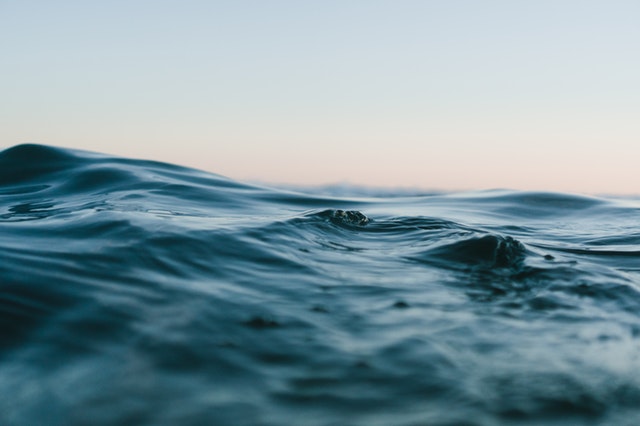Executive Summary
Mobile reporting has dramatically changed the face of journalism. Almost all smartphones now have both a camera and a microphone that allow the recording of sound and visuals to a standard suitable for broadcasting. It is not just journalists who are benefiting from the opportunities that smartphones give them – ordinary people are also able to record high-resolution pictures and sound and offer them for broadcasting. In 2008 it was Qatar-based television station Al Jazeera that began to give smartphones not only to their staff journalists but also to so-called citizen journalists in a variety of Arab states. In particular, they gave the phones to people in crisis zones that were more difficult for journalists to reach. Those individuals were able to post pictures, videos, and other information online. This is how the formerly rigid boundary between media producers (trained journalists) and media consumers (citizen journalists) has become blurred.
While written stories provide information and details - pictures are one of the most important elements of a report to create the atmosphere of the topic. With just one image you can transport audiences into the current situation by creating emotions.
Thanks to the technical innovation regarding smartphone photography it is possible to achieve professional results without expensive equipment - even in underwater situations.
The following section gives an overview about the usage of photographs to visualize sanitation- and water-related issues. Next to the technical aspects and necessary preparations, the correct usage of photography in difficult situations will be summarized.
Introduction
In comparison to professional cameras (like digital single-lens reflex cameras/DSLR cameras) which can provide high quality photos, the cameras of mobile devices (e.g. smartphone cameras) have many advantages. While professional cameras are more expensive and difficult to use for beginners, smartphone cameras are easy to handle and have a high level of flexibility.
It is not only the ever increasing quality of the cameras built into modern smartphones that makes their images more suitable for publication. It is also the fact that, with the help of the right software applications, pictures can be edited on the phone itself and published over the Internet. Mobile phone photography is best used in cases where the report must be filed quickly and even published immediately.You get the ability to react quickly and upload the images directly from the same device.
It can also be useful in places where a photographer with a camera may draw unwelcome attention. Big costly cameras are not suitable for every situation (e.g. it could have an intimidating impact on people). A smartphone can be seen as an everyday object and is much more discreet. With smartphone cameras reporters can get really close to the action without distracting or annoying the protagonists.
How to take good quality pictures with a smartphone
Any visual material produced on a smartphone requires the following steps:
1. Recording:
The phone is in a stable position and the user carefully chooses the subject of the picture, taking perspective and composition into consideration. Use a (mini-)tripod or something similar (like a box or other objects, you can even use your knee) to prevent blurry photos; as an alternative hold your smartphone with both hands.
Follow the “golden ratio”/”rule of thirds” as a guideline: divide the image into nine squares/equal sections, use the intersecting lines to place your object, when photographing persons also take care of headroom, background and details clothing labels.
There should be no light in the back of the object you want to shoot. Especially when you shoot portrait photos it is important to light up faces and eyes with small reflectors, white paper or the use of natural light. Backlighting is rather suitable for creative purposes.
The user takes as many pictures as possible. Additional shots can be useful to catch the “right moment”. Pressing the shutter button on your smartphone does not mean the picture is taken right away.
The content of the picture should be selected carefully. It should contain symbols of the topic the photograph wants to visualize (people, surroundings, details) and have a narrative structure.
2. Editing:
Contrast, exposure, saturation, light levels, straighten and cropping can all be done on the phone using dedicated software applications such as the free Photoshop Express, Snapseed or VSCO CAM.
3. Sending or broadcasting:
Pictures can be sent by MMS (Multimedia Messaging Service) or via e-mail. It is also possible to use a variety of mobile picture publishing services like Instagram, or blog services like Tumblr, to post the pictures online quickly. Save your images, e.g. in a workspace-storage cloud.
Points to consider
Try, if possible, to avoid using the digital zoom on a camera phone as it greatly decreases picture quality. If you want to get closer to a subject, move toward it with your phone.
Also try to avoid using the phone camera’s flash function, as this often results in an unnatural or badly lit (over-exposed) picture.
Be careful while editing pictures! Photos should not be manipulated by using too many filters. Although those photos could have an aesthetic character they should not conceal the message or distort reality.
Think about the content of the photo. The picture can evoke emotions but the photographer has to find a balance between documenting the situation (e.g. misery, water shortage, pollution) and not dramatising it. Personal photos can aim to the viewers compassion for the people who are involved in the situation but they should still respect privacy and dignity of the portrayed people. They should never be presented as victims or be photographed in humiliating situations.
Think about the story behind the image. Because the selection of content of the photo is determined by the photographer it should be comprehensible/understandable to others. In most cases an interplay of image and text is necessary to understand the context.
The use of stock photos should always be a last resort only because they will never be as authentic as as a picture taken directly on the spot.
Checklist
- Are battery levels good and is there enough room on the phone’s memory card?
- Is the camera set to take pictures at its highest definition / best quality?
- Use the highest available resolution (image size) in the settings.
- Keep the camera lense clean.
- Protect your mobile device from dirt or splashing water with special waterproof cases. In underwater situations you can even use the photo mode of action cameras (e.g. GoPro).
- What do I want to photograph? Have I considered perspective and composition?
- Do I know the name of the person I am photographing? Do I have the spelling of his or her name?
- Do I have the permission to take a picture? These things are important if the picture is to be published later:
- Buildings/places: Be careful with photographing private property and certain areas (e.g. buildings in Muslim countries, military installations)
- Persons: Respect every person’s right to their own image (personality rights). You should also respect cultural and religious aspects (e.g. Muslim women).
- The publication of photographs of minors requires a written declaration of consent of the parents.
- Tip: Talk about the rights of use concerning the photos.
- Does the picture tell a story? Does it arouse curiosity? How can I draw attention to the topic and create communication?
- Does the picture contain all needed symbols to visualize the water/sanitation-related topic?
- Are there any further information needed to understand the picture?
Shortcuts to Journalism: The Basics of Print, Online and Broadcast Reporting
When basic questions about journalism come up, this handbook, written and produced by Media in Cooperation and Transition (MICT), provides clear, brief and precise answers. Shortcuts to Journalism isn’t just for journalists – it’s also helpful for non-journalists. Download the English version here or the Arabic version here.
Schmidt, E., Tirok, M. and Bösch, M. (2016): Shortcuts to Journalism: The Basics of Print, Online and Broadcast Reporting. Berlin, Germany: Media in Cooperation and Transition gGmbH PDFWar on Instagram: Framing Conflict Photojournalism with mobile Photography Apps
This paper examines recent acclaim for professional embedded photojournalists who visually document the experience of US soldiers in Afghanistan using the popular mobile photo application Hipstamatic.
ALPER, M. (2013): War on Instagram: Framing Conflict Photojournalism with mobile Photography Apps. In: SAGE Journals: Volume 16 , 1233-1248 . URL

